Thanksgiving in a pandemic means smaller birds, fewer leftovers
This year's Thanksgiving celebrations are shaping up to be a little more fancy, a little more pricey and a lot smaller than usual.
Many people are planning to avoid travel and to gather in smaller numbers as Covid-19 cases climb to new heights. Grocers are gearing up to sell smaller turkeys and less-hefty quantities of side dishes. Food makers, meanwhile, are catering to first-time Thanksgiving chefs, and restaurants are touting takeout feasts for those would rather not cook. Here's what to expect as you prepare your holiday dinner.
Smaller Turkeys
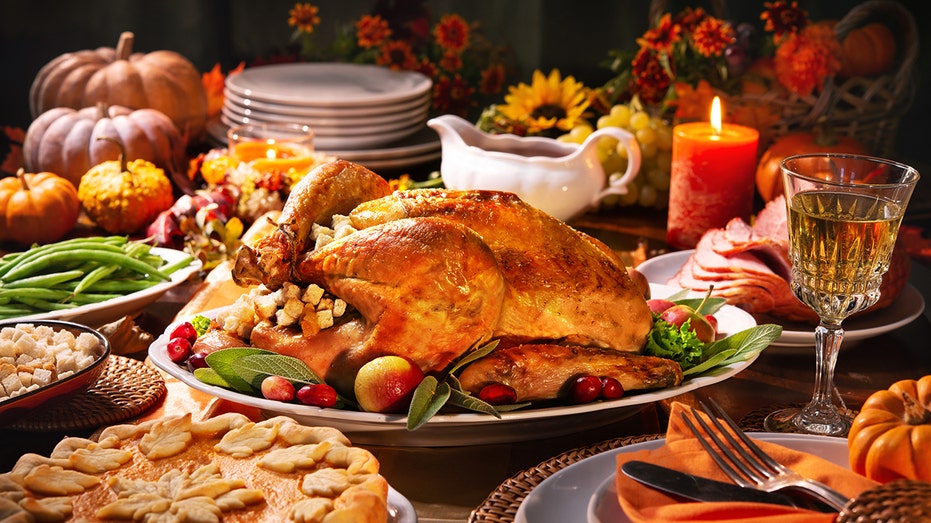
This year's Thanksgiving celebrations are shaping up to be a little more fancy, a little more pricey and a lot smaller than usual. (iStock)
Fewer guests around the table means less meat. Grocers this year are stocking smaller turkeys -- 12 to 14 pounds in some cases rather than 16 to 20 pounds -- and hams.
Raley's Inc., a chain of 130 grocery stores in California, bought as many smaller, frozen turkeys as it could months ago in preparation for the pandemic Thanksgiving. It still might not be enough. "Everyone will get a bird if they want it, but they might not get the size they want," said Chief Executive Keith Knopf.
Turkey supplier Cargill Inc. said it was too early to tell if consumer demand will change going forward. Because retailers bought birds at the start of the calendar year, the quantity, turkeys' size and prices were locked in before the pandemic.
PERDUE RELEASES TURKEY NUGGETS FOR SMALLER THANKSGIVING DINNERS
Other grocers are selling chickens, turkey breasts and other cuts that are easier for novices to cook. Distributor Gordon Food Service Inc.'s bricks-and-mortar stores are offering six-pound bone-in turkey breasts for the first time.
Jagtar Nijjar, director of import and commodities at Gordon Food, said retailers are also ordering boneless turkey breasts that people can roast. With few customers buying bigger birds, they will be cut into deli meat, he says.
Grocers are also selling precooked holiday meals designed for smaller gatherings. Save Mart Cos., which operates more than 200 grocery stores in California and Nevada, is selling ready-to-eat turkey and ham meals for two, said Trey Johnson, the grocer's chief merchandising and supply-chain officer.
Buy That Canned Pumpkin -- Now

Shoppers search for items at a Costco Wholesale store in Colchester, Vermont. . (Photo by Robert Nickelsberg/Getty Images)
The U.S. food-supply chain has struggled for most of this year as people buy more food and cook more at home. Baking ingredients, soup, canned vegetables and frozen meat remain low in supply going into the holidays.
Grocery stores put Thanksgiving foods on display earlier than usual this year, hoping to spread demand over the weeks leading up to the holiday. New Seasons Market, a chain of more than 20 stores in the Pacific Northwest, secured three times as many frozen turkeys as it did last year and began selling holiday items in October.
Manufacturers are making high-demand items in greater quantities, including flour, canned food, paper towels and aluminum pie trays.
THANKSGIVING 2020: AAA PREDICTS THAT 50 MILLION AMERICANS WILL TRAVEL FOR HOLIDAY
"The retailers want a little more inventory, and they want it a little sooner," said B&G Foods Inc. Chief Executive Ken Romanzi. The company, which owns Green Giant vegetables, expects inventory to hold up much better than in the spring. "We are in canned veggies' time of year. This is it," he said.
Another major vegetable canner, Del Monte Foods Inc., said sales were already significantly higher than a normal Thanksgiving stretch. "We've expanded our growing regions, we've added shifts in production," said Greg Longstreet, Del Monte's CEO. "We're ready."
What You'll Pay
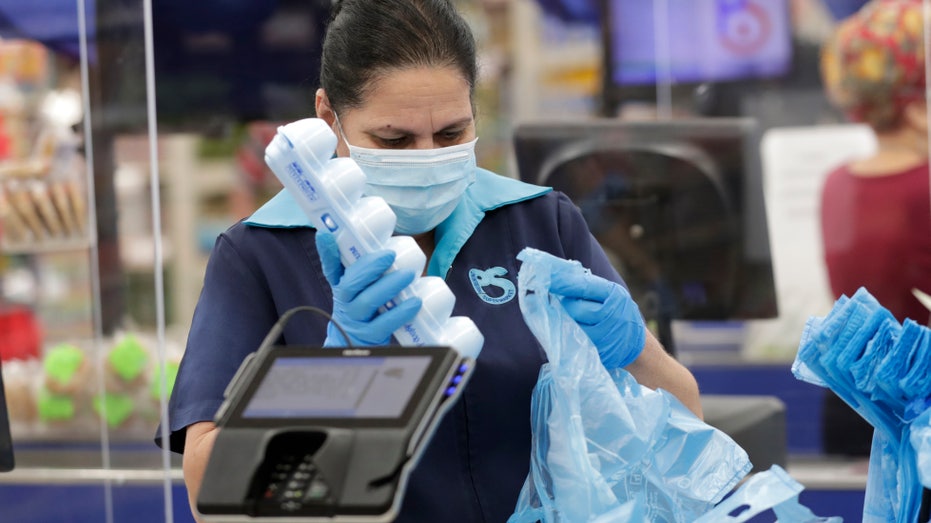
Food manufacturers say they can't justify discounts when demand is already beyond their production capacity. (AP Photo/Lynne Sladky)
Tight supplies and growing demand mean higher prices and fewer discounts.
The cost of a typical Thanksgiving meal has risen 3.7% from a year ago to about $55.27, according to Nielsen. Normally, foods including Thanksgiving items rise by 1% to 2% each year, Nielsen data showed.
Food manufacturers say they can't justify discounts when demand is already beyond their production capacity. Executives say their operating costs have risen during the pandemic, with purchases of protective equipment for factory workers, pay for employees on sick leave and higher prices for commodities and transportation.
B&R Stores Inc. isn't offering discounts on boneless hams and cream of mushroom soups this year because inventory is tight, said Mark Griffin, its president. The Lincoln, Neb.-based grocer with about 20 stores plans to put bone-in hams on sale instead. "We've typically had huge displays" of sale items, Mr. Griffin said. "This year, we're not."
WHOLE FOODS, PROGRESSIVE TEAM UP TO OFFER THANKSGIVING TURKEY INSURANCE
Turkeys are more expensive this year partly because of production cutbacks that predated the pandemic. After reviewing its business last year, Cargill ended production of fresh and frozen whole turkeys at a Texas plant that processed 27,000 turkeys a day.
"This put the price pressure on," said Mr. Nijjar of Gordon Food Service. Wholesale prices for turkey have increased 15% from last year to about $1.25 a pound, he added.
In some cases, retailers have turned to niche suppliers making higher-end cranberry relish or organic pie filling to fill gaps on their shelves, which is also pushing prices higher.
Meal Kits to the Rescue
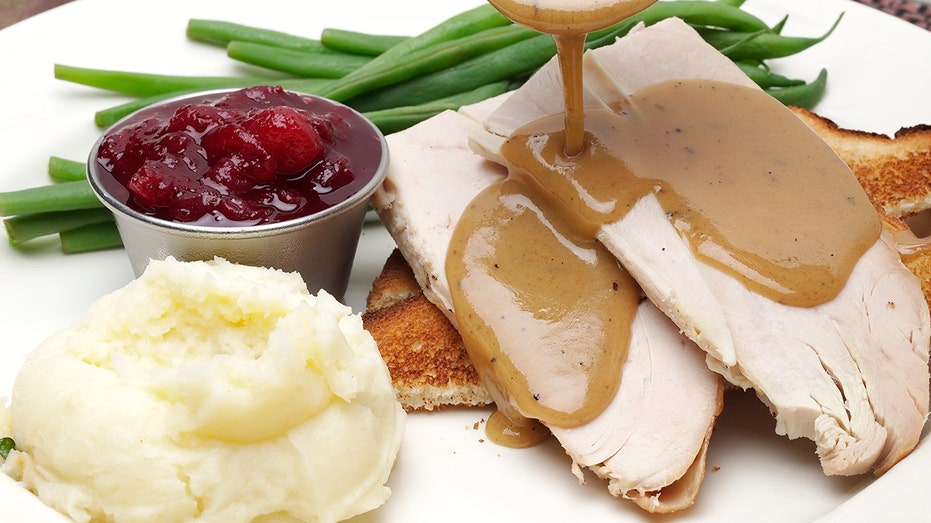
The cost of a typical Thanksgiving meal has risen 3.7% from a year ago to about $55.27, according to Nielsen. (iStock)
Food companies including Conagra Brands Inc. and General Mills Inc. expect first-time chefs to attempt more elaborate casseroles, side dishes and desserts since they won't be traveling to relatives.
"You're on the hook to cook this year," said Jeanine Bassett, General Mills' vice president of market research. "America has skilled up in the kitchen."
Susan Izzo, a nurse practitioner in Vernon, Conn., said she doesn't feel comfortable going to her in-laws' house this Thanksgiving. Instead, she plans to make the meal for her husband and twin 8-year-old daughters.
"For the first time in my life, I'm going to have to learn to cook a turkey," she said. "We're going to bust out the linens and eat at the dining room table that has been covered in my daughters' homework."
Meal-kit company Blue Apron Holdings Inc. is introducing a Thanksgiving cooking kit that feeds up to eight people for $135. People can also order an additional pair of side dishes, mushroom braised collard greens and roasted carrots in ginger syrup, for $26.
Turkey To Go
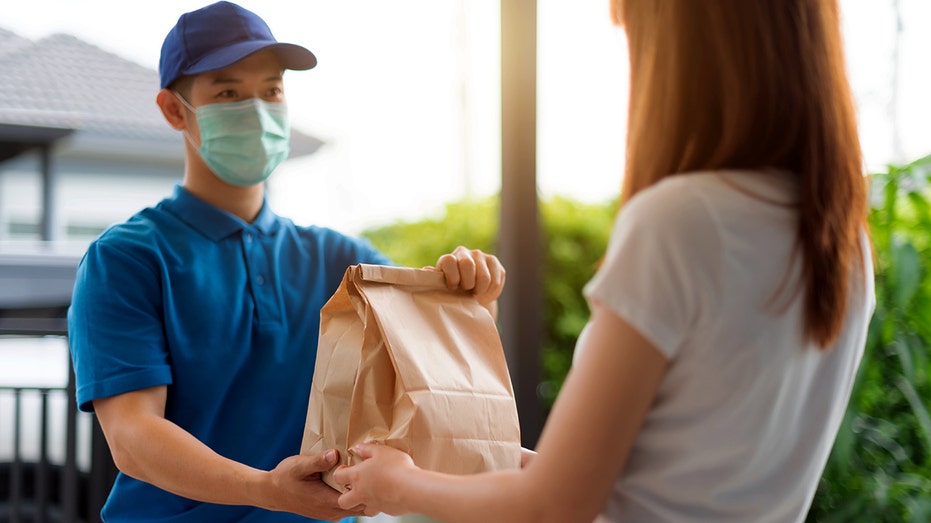
Some restaurants say they are receiving more orders for their takeout feasts than usual. (iStock)
Restaurants are hoping for a Thanksgiving bump to help their battered businesses. Some say they are receiving more orders for their takeout feasts than usual.
Del Frisco's Double Eagle Steakhouse, owned by Landry's Inc., is selling a turkey dinner for two to four people for $175 to $250. Ruth's Chris Steakhouse, owned by Ruth's Hospitality Group Inc., is selling a Thanksgiving meal to go, with a roasted half turkey breast and sides, for $165 for four people. The company is marketing it to loyal customers, hoping to make up for the lost business in its dining rooms this year.
For a less costly feast, Cracker Barrel Old Country Store Inc. is selling a meal of breaded, fried turkey fillets and sides for $40 to feed three to five people.
Fewer Leftovers
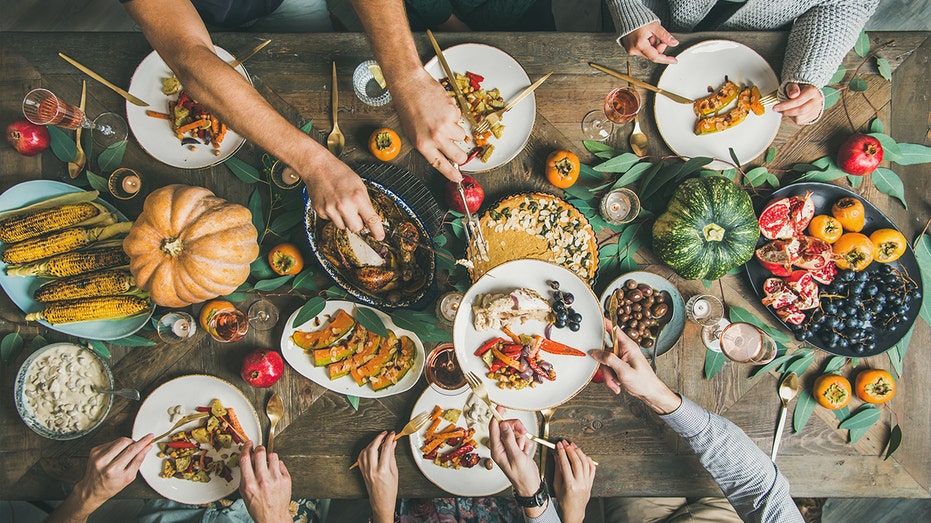
Traditional Thanksgiving or Friendsgiving holiday celebration party. (iStock)
GET FOX BUSINESS ON THE GO BY CLICKING HER
Smaller Thanksgiving meals this year are likely to produce fewer leftovers, said Bob Nolan, who leads consumer insights and analytics for Conagra Brands Inc., the maker of Healthy Choice frozen meals, Birds Eye frozen vegetables and Marie Callender's pies.
"When you have a bigger gathering, you build in a larger margin of error, " he said. "This year, there will be less variety, and people will have fewer leftovers."
--Jacob Bunge contributed to this article.




















